We Aim To Be Masters In Paint, Polish & Protect- Sharad Malhotra
- By T Murrali
- December 18, 2020

Q: Globally, the car care market is bigger than the automotive aftermarket for paints. How is it in India. What is your current share in car care business and how do you plan to enhance it?
Malhotra: Car Care business is a new domain for us and we are just starting out. Globally and in India too, this is a large business area with potentially a larger market size than automotive aftermarket for paints. We are studying this business and working out our strategy. We will be offering our car care products as a product solution, through online and other channels, and as a service directly by us and our partners as well. This is an exciting area and you will soon see us becoming more visible.
Q: Your intent was to become a solutions partner, expanding into different areas like car care etc. Can you update on this journey?
Malhotra: We see ourselves emerging as a total solutions partner for customers, with car care encompassing refinishing of the paint as well. We call ourselves an augmented Finishing solutions company so our purpose is to provide excellent, unmatched finishing solutions for any surface, including cars.
This positions us quite uniquely in the market as no other player will be able to integrate paint into the car care proposition.
 Q: Following car care technologies from the parent company in Japan may not be helpful as the geographical conditions are different in India. How do you customise it? Is your Indian R&D helping it?
Q: Following car care technologies from the parent company in Japan may not be helpful as the geographical conditions are different in India. How do you customise it? Is your Indian R&D helping it?
Malhotra: While we leverage the knowledge and technology developed by our parent and sister companies, we essentially follow the market requirement. So we are in terms of technology and developments. We make for India, make in India and provide our solutions across India. That is how we operate.
For the automotive aftermarket business, our R&D set up in India is quite extensive and well resourced. Our technology centre in Manesar serves us well – both for the Indian market and as a key resource for the global business. This is where we do bulk of our developments – whether for paints or car care products.
Q: Till few years ago ceramic coating was popular in India. What is the current trend and how do you cater to the every changing customers’ expectations?
Malhotra: Ceramic coating is still quite popular but there are other products available too for the consumer. Our approach is to use our knowledge of surfaces and surface coatings to create unique and differentiated products for our customers. In this respect, we are developing new technologies. One of the unique products we have in this space is our CyGlaz clearcoat 9905 which creates a very strong film that far exceeds the performance of any normal coating or even a ceramic coating. So, there is a lot more in our kitty and we will soon be launching such products and services.
Q: What is Nippon’s USP? What are the compelling reasons for customers to look for NPI?
Malhotra: Every company tries to build its own compelling solution. Our differentiation comes from our widespread dealer network, our presence in over 1,000 towns in India, our unique products and services, our amazing sales and service team, our embracing of new ideas and platforms, our willingness and ability to customise, our short TAT between concept to creation and many more things. And all this stems from our unique DNA which makes us Nippon Paint. And this DNA is what makes us click across Asia Pacific and makes us the force that we have become.
The automotive aftermarket space is relatively very new for Nippon Paint and it is only in 2014 that we started focusing on this space as a separate, identified international business. So all that we have created is only in a short period of five to six years as compared to our illustrious competitors who have decades of legacy and knowledge. But I also feel that our freshness and ideas are helpful to give us a different perspective of the industry and emerging opportunities our uncluttered mind gives us speed to execute.
Q: Tell us about the Velocity Repair System; how many outlets are functional now and what the target for the next five years?
Malhotra: When we launched our Velocity Repair programme, there were not too many takers for it. Now, people who have used this product swear by it and use it extensively. In the first round, we focused on creating branded Nippon Paint Xpress Centres and set up around 50 such centres across India. Now, we take the product proposition across the country and make it available to all our major partner workshops. So, we have around 300 active users for this product line in India at this moment.
Our product proposition is still fresh and no competitors have been able to develop a similar system. In the future, we will continue to expand this portfolio and workshop network and take this to over 1,000 outlets. The key idea is for the car owner and not just the repair centre to experience this service and that’s what we are working on now.

Q: The secondary car market is always larger than the primary market and it is growing even bigger with the pandemic induced used-car sales. What kind of opportunity does this give you?
Malhotra: We are actively focused on the used car market and are working with leading used car players on the refurbishment side of things. Our solutions which give fast, efficient and high quality repairs make us the ideal paint partner for such used car companies and we are leveraging that capability.
In this field, we are also working on the concept of providing painting services and not just paint. Going forward, we see the refurbishment business relating to our used car customers growing into a very sizeable part of our business.
Q: What are the challenges NPI faced during the lockdown and COVID induced New Normal?
Malhotra: Several challenges; and we used this period to innovate. We relooked at our customer propositions. We developed and launched new products. We created new services. We set up new manufacturing concepts. We distributed our manufacturing from a single core to multiple units. We streamlined our supply chain. We localized more products and raw materials. We trained our workforce. We sharpened our optimisation focus. We developed new digital solutions. We empowered our managers. We cut our fat and become more lean and flexible. And yes, we didn’t forget our social responsibility and supported the painter community at this turbulent time.
So, in that sense, Covid-19 has been a great accelerator for us. Things that would have normally been done in a few years have been accomplished in a few months.
Q: What is the current status of the imported parts and accessories in India after the ban on imports from China? Does it anyway help affect you?
Malhotra: The paint industry has a fair share of raw materials and finished goods coming from China. At our side, we are not overly dependent on sourcing our products from China and more so, now our supply chain is more localised than ever. Yes, certain products sourcing from non-China sources is challenging but we are looking ahead at more localization and more diversified sourcing.
Q: With the life of automotive paints increasing due to technological advancements, how is the revenue being sourced nowadays?
Malhotra: We always aim to provide customers with more durable products. Our business is not impacted by the life of paint, but by the differentiation of the solutions that we offer. Our primary business in the aftermarket relates to collision repair which is not dependent on life but repair of paint due to accidents. Furthermore, as we expand into new products and new domains like wood coatings, car care, bus and application vehicles painting and light industrial coatings, our dependency even on collision repair induced paint consumption is also going down.
We always say – give the customer the best products and services and he will refer more customers to us. Give him a shoddy product with poor durability, we will shoot ourselves in the foot. So, we are absolutely clear that technology induced advancement of paint durability will always stand us in good stead.
Q: Can you tell us about your short-term and long-term plans?
Malhotra: In the short term, our plan is to utilise the learnings from the Covid induced lull to our advantage. As mentioned before, we have done a lot of things that will now help us. So, we will leverage these developments, regain our business and be back on growth. To that extent, October 2020 has been a good month where we were back on double digit growth and that gives us the satisfaction that we are back on track.
From the longer term perspective, the lockdown period has helped us to develop an alternative view about our business approach. We aim to be masters in Paint – Polish – Protect and we will be focusing on the various dimensions of this new strategy in the next two to three years. We are here to stay. And we are future ready. (MT)
Ola Electric Receives INR 3.66 Billion In PLI-Auto Incentive For FY2025
- By MT Bureau
- December 25, 2025
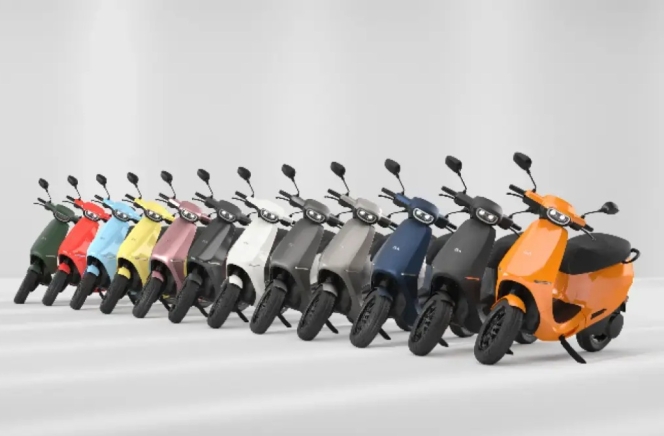
Bengaluru-based electric vehicle maker Ola Electric has received a sanction order from the Ministry of Heavy Industries for incentives totalling INR 3.66 billion. The payment is granted under the Production Linked Incentive (PLI) Scheme for Automobile and Auto Components for FY2024-25.
The incentive relates to the Determined Sales Value for the period and will be disbursed through IFCI, the financial institution appointed by the government for the scheme.
The PLI-Auto Scheme is an initiative by the Government of India designed to increase domestic manufacturing and the adoption of advanced automotive technologies. Ola Electric’s eligibility for the claim is based on its vertical integration and localisation of electric vehicle (EV) components.
“The sanction of INR 3.66 billion under the PLI-Auto Scheme is a strong endorsement of Ola Electric’s manufacturing capabilities and our commitment to building world-class EV technology in India. This incentive recognises our sustained efforts in scaling domestic production, deepening localisation, and driving innovation across the electric mobility value chain. We remain committed to supporting the Government of India’s vision of making India a global hub for advanced automotive manufacturing and clean mobility,” said the company in a statement.
bp To Sell 65% Stake In Castrol To Stonepeak For $10.1 Billion
- By MT Bureau
- December 25, 2025

UK-based energy major bp has reached an agreement to sell its 65 percent shareholding in Castrol to investment firm Stonepeak at an enterprise value of USD 10.1 billion. The deal follows a strategic review of the lubricants business and is expected to result in net proceeds for bp of approximately USD 6 billion.
The transaction includes USD 0.8 billion as a pre-payment of future dividend income on bp’s retained 35 percent stake. The valuation represents an enterprise value to EBITDA ratio of approximately 8.6x. Following the sale, a new joint venture will be formed with Stonepeak holding the majority interest and bp retaining 35 percent.
The sale is a component of bp's USD 20 billion divestment programme. To date, the company has announced or completed divestments totalling USD 11 billion.
Proceeds from the Castrol transaction will be used to reduce bp’s net debt, which stood at USD 26.1 billion at the end of the third quarter of 2025. The company aims to reach a net debt target of USD 14–18 billion by the end of 2027. bp has a two-year lock-up period on its remaining 35 percent stake, after which it has the option to sell.
Carol Howle, interim CEO, bp, said, “Today’s announcement is a very good outcome for all stakeholders. We concluded a thorough strategic review of Castrol, that generated extensive interest and resulted in the sale of a majority interest to Stonepeak. The transaction allows us to realise value for our shareholders, generating significant proceeds while continuing to benefit from Castrol’s strong growth momentum. And with this, we have now completed or announced over half of our targeted USD 20bn divestment programme, with proceeds to significantly strengthen bp’s balance sheet. The sale marks an important milestone in the ongoing delivery of our reset strategy. We are reducing complexity, focusing the downstream on our leading integrated businesses, and accelerating delivery of our plan. And we are doing so with increasing intensity – with a continued focus on growing cash flow and returns and delivering value for our shareholders.”
Anthony Borreca, Senior Managing Director, Stonepeak, said, “Lubricants are a mission-critical product, which are essential to the safe and efficient functioning of virtually every vehicle, machine, and industrial process in the world. Castrol’s 126-year heritage has created a leading market position, an iconic brand, and a portfolio of differentiated products that deliver meaningful value to its customers. We are excited to work alongside Castrol’s talented employees, coupled with bp’s continued guidance as a minority interest holder, as we support the business’s continued growth.”
The transaction is expected to complete by the end of 2026, subject to regulatory approvals. bp stated that the move allows the company to simplify its portfolio and focus its downstream operations on integrated businesses.
- Automotive Skills Development Council
- ASDC
- Central Board of Secondary Education
- CBSE
- Toyota Kirloskar Motor
- National Automobile Olympiad
- Dr Biswajeet Saha
- Vinkesh Gulati
- G Shankara
ASDC, Toyota Kirloskar Motor, CBSE Host National Automobile Olympiad 2025
- By MT Bureau
- December 24, 2025
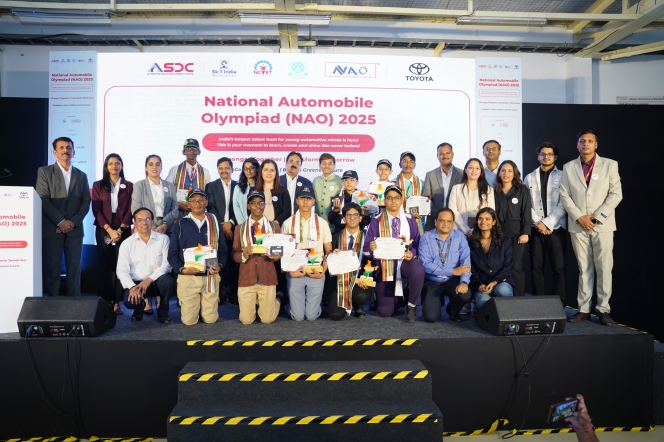
The Automotive Skills Development Council (ASDC), in collaboration with the Central Board of Secondary Education (CBSE) and Toyota Kirloskar Motor (TKM), concluded the National Automobile Olympiad (NAO) 2025. The event took place from 17–19 December at Toyota’s manufacturing facility in Bidadi.
The initiative, aligned with the Skill India Mission, is designed to introduce school students to careers in the automotive and mobility sectors. The Olympiad saw participation from 175 students in Classes VI to XII. These participants were selected from an initial pool of over 136,000 students from schools across India and the UAE.
The three-day event included:
- Industry Masterclasses: Sessions led by experts on automotive fundamentals and emerging technologies.
- Technical Challenges: Competitions covering robotics, welding precision and technical problem-solving.
- Future Mobility Modules: Exposure to hybrid vehicles, data science and AR/VR tools.
- Industry Immersion: Visits to the Toyota manufacturing plant, the Toyota Technical Training Institute (TTTI) and test-track experiences.
The Olympiad concluded with the announcement of winners across three categories:
|
Category |
1st Place |
2nd Place |
3rd Place |
|
Grades 6–8 |
Abeer Verma (Bhopal) |
Aaradhy Pradhan (Ghaziabad) |
Dakhsh Kumawat (Indore) |
|
Grades 9–10 |
Anchit Sahai (Maharashtra) |
Arjun Annamalai (Chennai) |
Mahatva Jain (Jaipur) |
|
Grades 11–12 |
Nishanth Sudhakar (Chennai) |
Vidhan Herpalani (Dubai) |
Punith Kumar (Bengaluru) |
Dr Biswajeet Saha, Director, Training & Skill Education, CBSE, said, “We are delighted to see Toyota Kirloskar Motor hosting National Automobile Olympiad, which perfectly aligns with CBSE’s vision of experiential and skill-based learning. Events like this provide students with invaluable exposure to real-world automotive excellence and industry best practices. They also bridge the gap between classroom learning and practical application, inspiring young minds.”
Vinkesh Gulati, Chairperson, ASDC, said, “National Automobile Olympiad is a powerful platform to spark curiosity and channel young talent toward the automotive sector. ASDC is committed to building a future-ready workforce, and collaborations such as this with Toyota Kirloskar Motor provide students early exposure to real-world industry practices. The enthusiasm and technical aptitude displayed by participants reaffirm our belief in India’s next generation of mobility professionals.”
G Shankara, Executive Vice-President, Toyota Kirloskar Motor, stated, “We are proud to collaborate with ASDC in nurturing young minds through NAO 2025. By offering experiential learning and access to world-class skilling infrastructure, we aim to inspire students to innovate and contribute meaningfully to the future of mobility while supporting the Skill India vision.”
The programme concludes a cycle of assessments and training intended to bridge the gap between academic learning and industrial application in the automotive sector.
- SIAM
- Society of Indian Automobile Manufacturers
- National Road Accident Reduction Challenge 2026
- Safe Journey
- Prashant K Banerjee
- Devashish Handa
- Suzuki Motorcycle India
SIAM Launches National Road Accident Reduction Challenge 2026 For Students
- By MT Bureau
- December 23, 2025
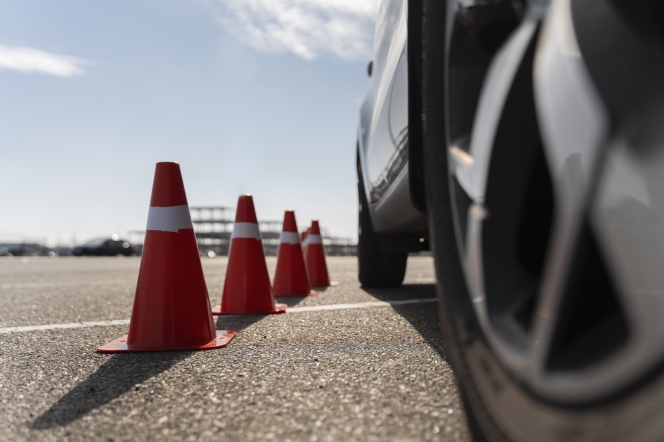
The Society of Indian Automobile Manufacturers (SIAM) has launched the National Road Accident Reduction Challenge 2026 under its ‘Safe Journey’ initiative. The competition invites undergraduate students across India to develop solutions aimed at improving road safety and reducing fatalities.
The challenge targets undergraduate students in teams of two to four. Participants are required to submit field-tested or ready-to-implement ideas across several themes:
- User-centric interventions
- Technology-driven safety
- Infrastructure improvement
- Evaluation and enforcement
Submissions must include a 15–20 slide concept deck backed by data validation, fieldwork, or prototypes. The deadline for nominations is 15 January 2026, with final projects due by 1 March 2026.
Shortlisted teams will present their projects to a jury consisting of representatives from SIAM, vehicle manufacturers (OEMs), transport authorities and NGOs. The winning team will be awarded a cash prize of INR 250,000 at the SIAM SAFE Annual Convention 2026.
Prashant K Banerjee, Executive Director, SIAM, said, “In India, around 485 people lose their life daily due to road accidents. India’s young minds have the power to drive real change on our roads. The National Road Accident Reduction Challenge 2026 is designed to channel their creativity, problem-solving skills, and sense of responsibility into practical interventions that can be implemented on the ground. By engaging students as partners in road safety, SIAM aims to foster a culture of accountability, innovation, and safer mobility for the nation.”
Devashish Handa, Executive Officer, Suzuki Motorcycle India (SMIPL), said, “Road safety is a key focus area of Suzuki Motorcycle India’s CSR efforts. We believe that student-led innovation can contribute meaningfully to safer mobility in India. Through SIAM’s National Road Accident Reduction Challenge 2026, we aim to strengthen road safety ethics among the young generation and encourage practical, on-ground interventions to help bring down road fatalities.”


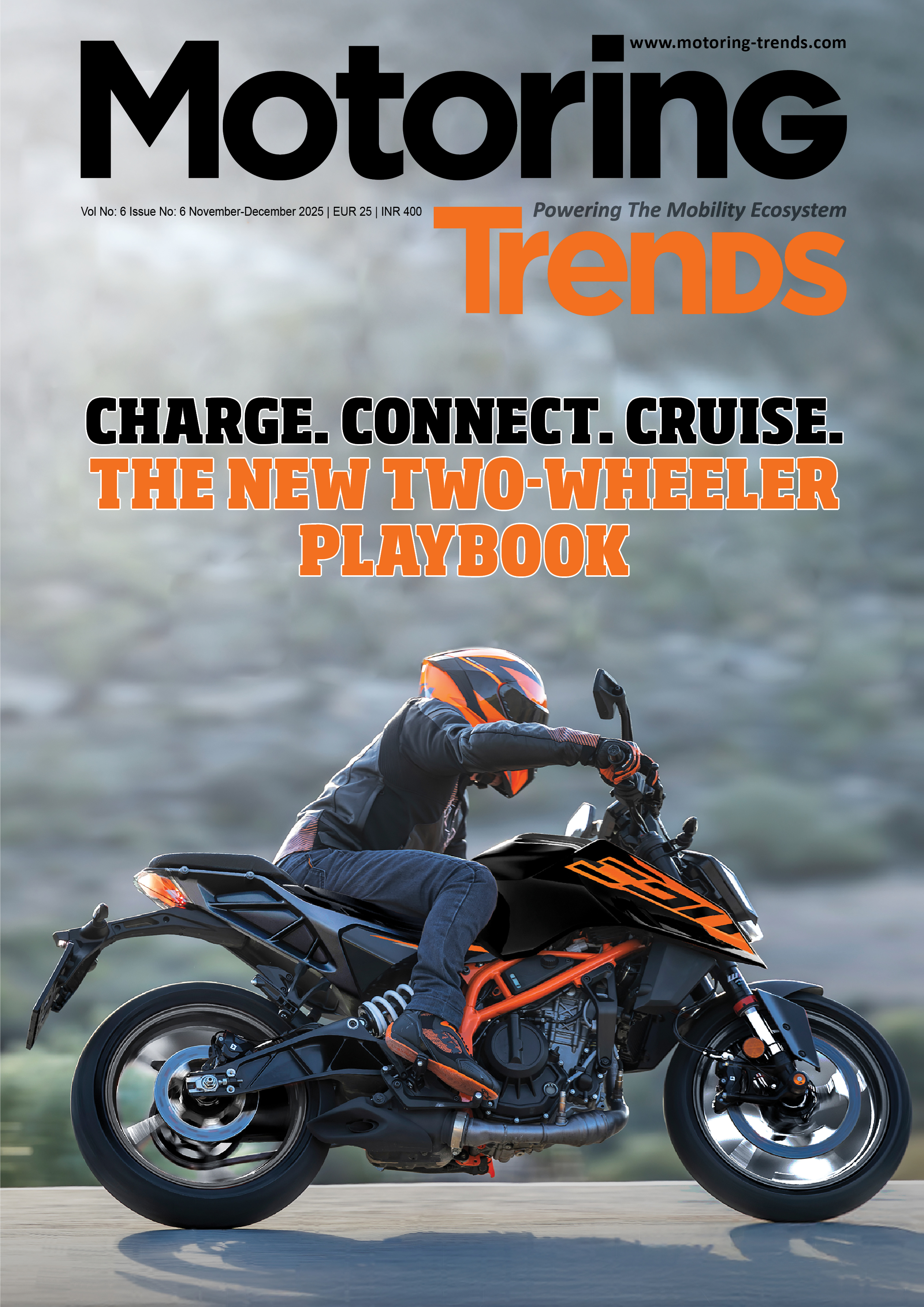
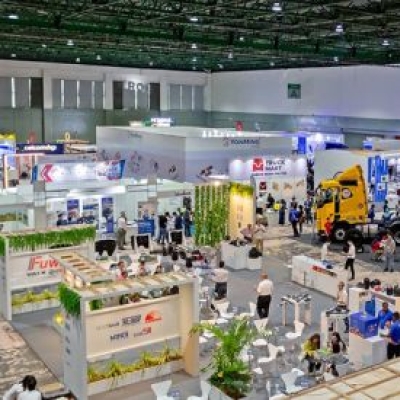
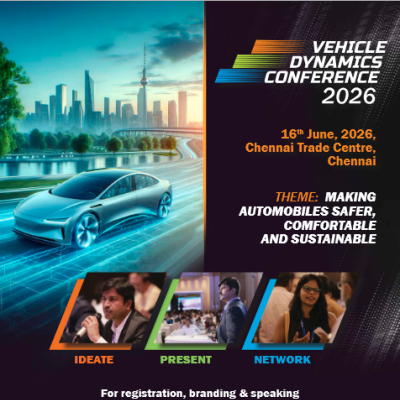
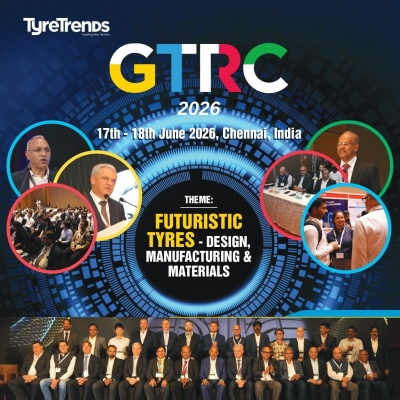
Comments (0)
ADD COMMENT